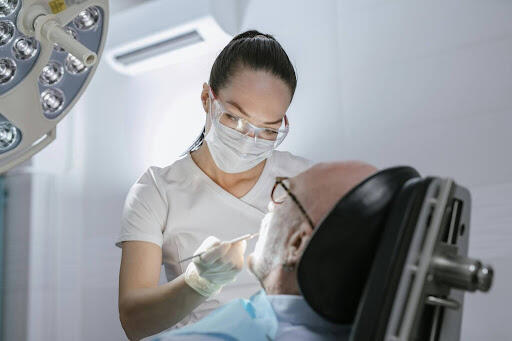
7 Modern Solutions for Common Senior Dental Challenges
Aging often brings unique dental concerns, from gum sensitivity to difficulty maintaining oral hygiene. What once felt like a routine cleaning can turn into a stressful or even painful experience for older adults.
Fortunately, new tools and approaches in dentistry are making it easier to deliver comfort while protecting long-term oral health.
By combining advanced technology with compassionate care, providers are finding effective ways to manage the most common dental challenges seniors face today.
Phosphor Plate Scanners for Gentle Imaging
Traditional X-rays can be tough on seniors – hard plates press into cheeks, and holding still can be difficult for those with mobility limitations. Modern dental phosphor plate scanners solve these issues by using thin, flexible plates that feel more like film than rigid sensors.
The process is quicker and more comfortable, yet the results are sharp, high-resolution digital images.
Seniors spend less time in the chair, and dentists gain clearer insights into hidden problems like cavities or senior bone loss. Reduced radiation exposure adds another layer of safety, making these scanners a win-win for patient comfort and diagnostic accuracy.
Ultrasonic Scalers With Soft-Tip Inserts
Cleaning around sensitive gums is a major hurdle for older adults, especially when gum recession exposes tender root surfaces.
Ultrasonic scalers equipped with soft, slim inserts gently vibrate to break up plaque and tartar, while a cool water spray washes debris away. Because less physical scraping is needed, patients experience less irritation and bleeding during treatment.
The process is also faster, which means less time with your mouth open and less fatigue in the chair. For many seniors, this shift makes cleanings feel like routine maintenance rather than an ordeal to be endured.
Full Mouth Debridement for Complex Cases
When plaque and tartar have built up over the years, a standard cleaning isn’t always enough. In those situations, dentists may recommend a mouth debridement, a deeper procedure that clears away thick deposits before regular cleanings can resume.
Specialized instruments and careful techniques make it possible to reach hardened areas that daily brushing can’t address. While it sounds intensive, the result is a healthier foundation for ongoing care and less discomfort in future visits.
For seniors who may have avoided the dentist due to past pain or cost, debridement can be the reset button that restores both oral health and confidence.
Saliva Substitutes and Moisturizing Rinses
Dry mouth is a side effect of many common medications, from blood pressure pills to antidepressants. Without enough saliva, seniors may struggle to chew, speak, or swallow comfortably, and they’re at greater risk for tooth decay.
Moisturizing rinses and saliva substitutes offer a simple, effective solution by coating the mouth with protective moisture. Some products even include enzymes and minerals that strengthen enamel and freshen breath.
Using these regularly can restore comfort, reduce infection risk, and improve quality of life. For seniors in assisted living, these rinses are an easy addition to daily routines that make a noticeable difference.
Ergonomic Dental Chairs With Better Support
For seniors with arthritis, back problems, or limited mobility, sitting through a long appointment can be just as challenging as the dental work itself. Many practices now invest in ergonomic dental chairs designed with extra cushioning, adjustable headrests, and smooth hydraulic lifts.
These features reduce pressure points and make it easier for patients to shift positions. Dentists also benefit, since supportive chairs help them access the mouth without straining.
By reducing both physical discomfort and anxiety, ergonomic seating allows seniors to focus less on endurance and more on the benefits of their care.
Advanced Screening Tools for Early Detection
Early detection is key for seniors, since untreated oral problems can worsen quickly and impact overall health. Tools like handheld intraoral cameras let patients see what the dentist sees, making the process more transparent and less intimidating.
Digital cavity detectors use light or laser technology to pinpoint tiny spots of decay before they grow into painful problems. Incorporating these technologies into routine exams ensures no detail is overlooked.
Just as due diligence in senior care prevents larger risks in housing and caregiving, early dental screening prevents small oral issues from spiraling into medical crises.
At-Home Maintenance Tools for Daily Comfort
The time between dental visits is just as important as what happens in the chair. Seniors often struggle with manual dexterity, so at-home tools like wide-grip toothbrushes, water flossers, and interdental brushes make daily care easier.
These devices minimize strain while ensuring teeth and gums stay clean. Consistent use not only prevents plaque buildup but also helps seniors maintain independence, which is vital for dignity and overall well-being.
Small adjustments, like adding a cushioned grip to a toothbrush handle, can make oral care a manageable habit rather than a frustrating task.
Senior dental care has evolved far beyond the old tools of decades past. With flexible imaging, ultrasonic technology, supportive seating, and at-home aids, providers now have solutions that prioritize both health and comfort.